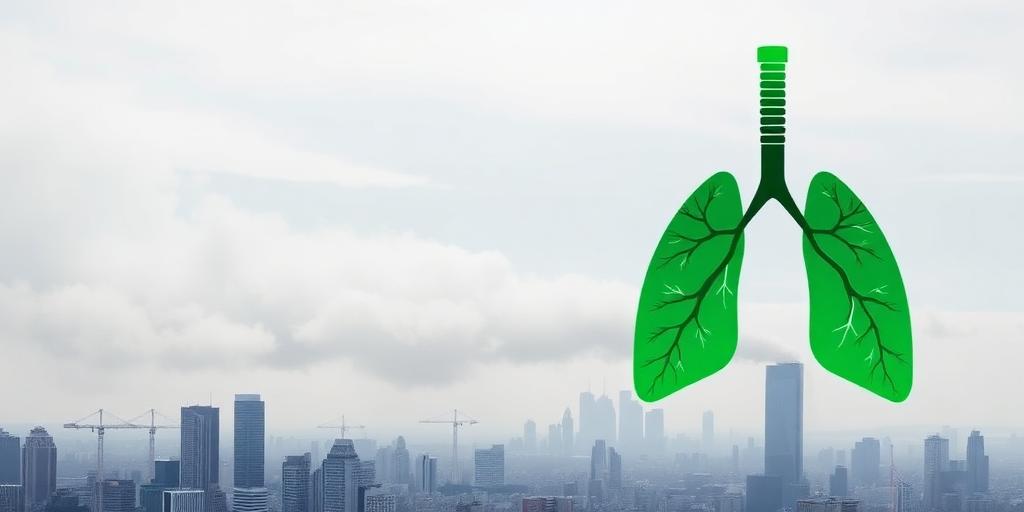The Impact of Air Quality on Your Health (2025)
Air quality is a critical environmental factor that directly impacts human health. In 2025, understanding this impact is more important than ever due to increasing urbanization and industrial activities. This post delves into the specific ways air quality affects your health, providing insights and actionable information to protect yourself and your community.
Understanding Air Quality
Air quality refers to the presence of pollutants in the air that can be harmful to human health and the environment. Common pollutants include particulate matter (PM2.5 and PM10), ground-level ozone (O3), nitrogen dioxide (NO2), sulfur dioxide (SO2), and carbon monoxide (CO). These pollutants come from various sources such as vehicle emissions, industrial processes, power plants, and natural events like wildfires.
Health Impacts of Poor Air Quality
Respiratory Issues:
- Asthma: Poor air quality can trigger asthma attacks, increase the frequency of symptoms, and reduce lung function.
- Chronic Obstructive Pulmonary Disease (COPD): Long-term exposure to air pollutants can exacerbate COPD, leading to increased hospitalizations and mortality.
- Respiratory Infections: High levels of pollutants can weaken the respiratory system, making individuals more susceptible to infections like bronchitis and pneumonia.
Cardiovascular Problems:
- Heart Disease: Air pollution can increase the risk of heart attacks, strokes, and arrhythmias. Particulate matter can enter the bloodstream, causing inflammation and damage to blood vessels.
- Hypertension: Exposure to air pollutants has been linked to increased blood pressure, contributing to hypertension.
Cancer:
- Lung Cancer: Long-term exposure to air pollutants, especially particulate matter and certain chemicals, significantly increases the risk of lung cancer.
- Other Cancers: Some studies suggest a link between air pollution and other types of cancer, including bladder and breast cancer.
Neurological Effects:
- Cognitive Impairment: Air pollution has been associated with cognitive decline and an increased risk of neurodegenerative diseases like Alzheimer's and Parkinson's.
- Mental Health: Exposure to air pollutants can worsen mental health conditions such as depression and anxiety.
Impact on Children:
- Developmental Issues: Children are particularly vulnerable to the effects of air pollution, which can impair lung development and increase the risk of respiratory diseases later in life.
- Asthma: Children living in areas with high air pollution levels are more likely to develop asthma.
Who Is Most at Risk?
Certain populations are more vulnerable to the health impacts of poor air quality:
- Children: Their respiratory systems are still developing.
- The Elderly: They often have pre-existing respiratory or cardiovascular conditions.
- Individuals with Chronic Diseases: Those with asthma, COPD, heart disease, or diabetes.
- Low-Income Communities: Often located near industrial areas or major roadways with higher pollution levels.
Monitoring Air Quality
Staying informed about air quality levels in your area is crucial for protecting your health. Here are several ways to monitor air quality:
- Government Agencies: Many countries and regions have environmental agencies that monitor and report air quality data. For example, the U.S. Environmental Protection Agency (EPA) provides air quality information through its AirNow website and app.
- Air Quality Index (AQI): The AQI is a standardized measure used to communicate air quality levels to the public. It ranges from 0 to 500, with higher values indicating poorer air quality. Check the AQI for your area to understand the potential health risks.
- Mobile Apps and Websites: Several apps and websites provide real-time air quality data, including PurpleAir, Plume Labs, and The Weather Channel.
Strategies to Protect Your Health
Stay Informed:
- Regularly check air quality reports for your area.
- Sign up for air quality alerts to receive notifications when pollution levels are high.
Reduce Exposure:
- Limit outdoor activities when air quality is poor, especially during peak pollution times.
- Exercise indoors on high pollution days.
- Close windows and doors to keep indoor air clean.
Use Air Purifiers:
- Use air purifiers with HEPA filters to remove particulate matter and other pollutants from indoor air.
- Ensure proper ventilation when using air purifiers.
Wear Masks:
- Use N95 masks when outdoors in polluted areas to filter out particulate matter.
- Ensure the mask fits properly to provide adequate protection.
Advocate for Clean Air:
- Support policies and initiatives that promote clean air.
- Advocate for stricter regulations on emissions from vehicles and industries.
- Participate in community efforts to improve air quality.
The Future of Air Quality
In 2025, addressing air quality challenges requires a multi-faceted approach involving governments, industries, and individuals. Key strategies include:
- Investing in Renewable Energy: Transitioning to renewable energy sources such as solar, wind, and hydro power can significantly reduce air pollution from power plants.
- Promoting Electric Vehicles: Encouraging the adoption of electric vehicles through incentives and infrastructure development can decrease vehicle emissions.
- Improving Public Transportation: Investing in efficient and accessible public transportation systems can reduce the number of vehicles on the road.
- Implementing Stricter Regulations: Enforcing stricter regulations on industrial emissions and air quality standards can help reduce pollution levels.
- Enhancing Air Quality Monitoring: Expanding and improving air quality monitoring networks can provide more accurate and timely information to the public.
Conclusion
Air quality significantly impacts your health in numerous ways, from respiratory and cardiovascular problems to neurological effects and cancer. By understanding the risks, monitoring air quality levels, and taking proactive steps to protect yourself, you can mitigate the adverse effects of air pollution. In 2025, prioritizing clean air is essential for creating healthier and more sustainable communities.









